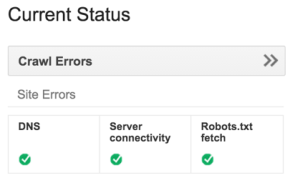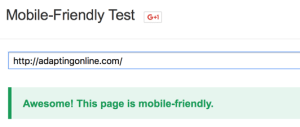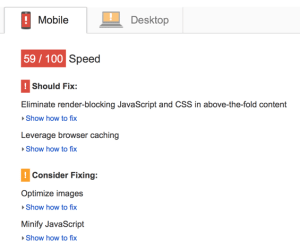Your site is a valuable asset. It serves as the first point of contact that visitors have with your company.
But as time passes it’s easy to neglect your site.
You get busy.
You have orders to fulfill.
Enquiries to respond to.
Business meetings to attend.
So what ends up happening is your site gets pushed further and further down the search results. This is why it is crucial to periodically audit your site. Because conducting an audit gives a clear picture of the current state of your site.
It can reveal technical issues that could be affecting your site’s local search visibility. And even uncover opportunities to help your pages rank higher.
Site audits are massive undertakings. But taking it one step at a time will drastically improve your local SEO and push your internet marketing efforts further.
Here we break down the entire process and go more into detail in each section.
On-Page Technical Audit
Technical audits are necessary for every site.
Any number of problems could be negatively affecting your site which may have easily been overlooked by your website designer. First login to your Google Webmaster Tools account. Then click Crawl and Crawl Errors on the left side. You will then see a graph of various errors for both the desktop and mobile versions of your site.
The dashboard will also display the current status of your site:

Here are the various types of possible errors and what they mean:
- DNS errors: This occurs when the Googlebot is unable to communicate with the DNS server either because it is down or the name servers are still propagating. Contact your hosting technical support if you continue having DNS errors.
- Server connectivity: Connection issues are typically due to server configurations that may be blocking access or slow servers. Make sure your site is not blocking Google and consider upgrading your hosting if the problem persists.
- Robots.txt fetch error: This is a common error and involves robots.txt files that are misconfigured. The robots.txt file prevents indexing of certain pages but it can also prevent the Googlebot from crawling your site. Consider removing this file completely if you want search engines to index all pages.
If there are no errors, you should see the following:

Mobile is another important consideration.
Earlier this year, Google launched a major algorithm that makes mobile friendliness a ranking factor. What this means is your site could be ranking lower for mobile search results if it isn’t optimized for mobile devices. Use Google’s mobile friendly tool to test your site.
If your site passes the test, you will see the following:

The best website designs are those that are optimized for mobile. A poor mobile experience is more likely to result in visitors bouncing to competing pages. If your site fails the tests, follow these steps to make your site mobile friendly.
Users expect pages to load quickly.
If it takes longer than a few seconds for your site to load, you risk visitors becoming impatient and bouncing out. Use the PageSpeed Insights tool to measure the performance of desktop and mobile version of your site. The tool even provides suggestions on how to improve loading times:

Here are ways to speed up your site:
- Minimize HTTP requests
- Reduce server response time
- Enable compression
- Minify HTML, CSS, and JavaScript
- Optimize all images
- Reduce redirects
- Use a content delivery network (CDN)
The technical aspects of a local search audit is undoubtedly complex and time-consuming. But they also have a direct impact on your bottom line.
On-Page Content Audit
Every search query starts with keywords.
Google analyzes hundreds of factors to determine where sites should rank. Content is easily one of the most important factors. Optimizing these factors increases the relevancy of your site and improves search visibility.
Check all the following:
- Title tags: Make sure to include your target keywords in the title tags. To target a local area, add the city name to the title as well as the business name.
- Meta descriptions: These are short snippets that are displayed in the search results directly below the title. Include the target keywords here and write a short description that is relevant to the page.
- Headers: Headers are useful to structure the content and are also a good place to include secondary keywords. But be careful not to spam your content.
- Content: Content is what will drive visitors to your site. But be absolutely careful about duplicating large blocks of content across the site. Practices like these can result in a ranking penalty. Focus on providing relevant and engaging content.
- NAP: NAP (name, address, phone number) is critical to rank for geo-targeted searches (e.g. SEO services in Austin) so make sure this information is visible on your pages.
- Citations: Citations are another ranking factor that Google uses to rank local searches. Make sure your business is on Google My Business if it isn’t already. Then list your business on sites such as Yahoo Local, Bing Places, Yelp, Yellow Pages, Angie’s List, etc.
Fix any and all content issues on your site.
Create a spreadsheet to keep your efforts organized. There are also tools available like Screaming Frog that make it easy to analyze and audit a site. This tool is particularly beneficial as it lets you export reams of data so you can focus on more critical areas (e.g. faulty redirects, broken links, missing title tags, etc.).
Conclusion
There is nothing glamorous about site audits.
But there is absolutely no question about their value. An audit can reveal site problems that may be negatively affecting your rankings. And uncover areas that can be improved. Taking steps to address both can considerably improve your online marketing efforts.
Looking for a professional SEO company that delivers measurable results?
Contact us today to schedule an initial consultation with our marketing team. We deliver comprehensive SEO services that are tailored to fit all your business needs.
